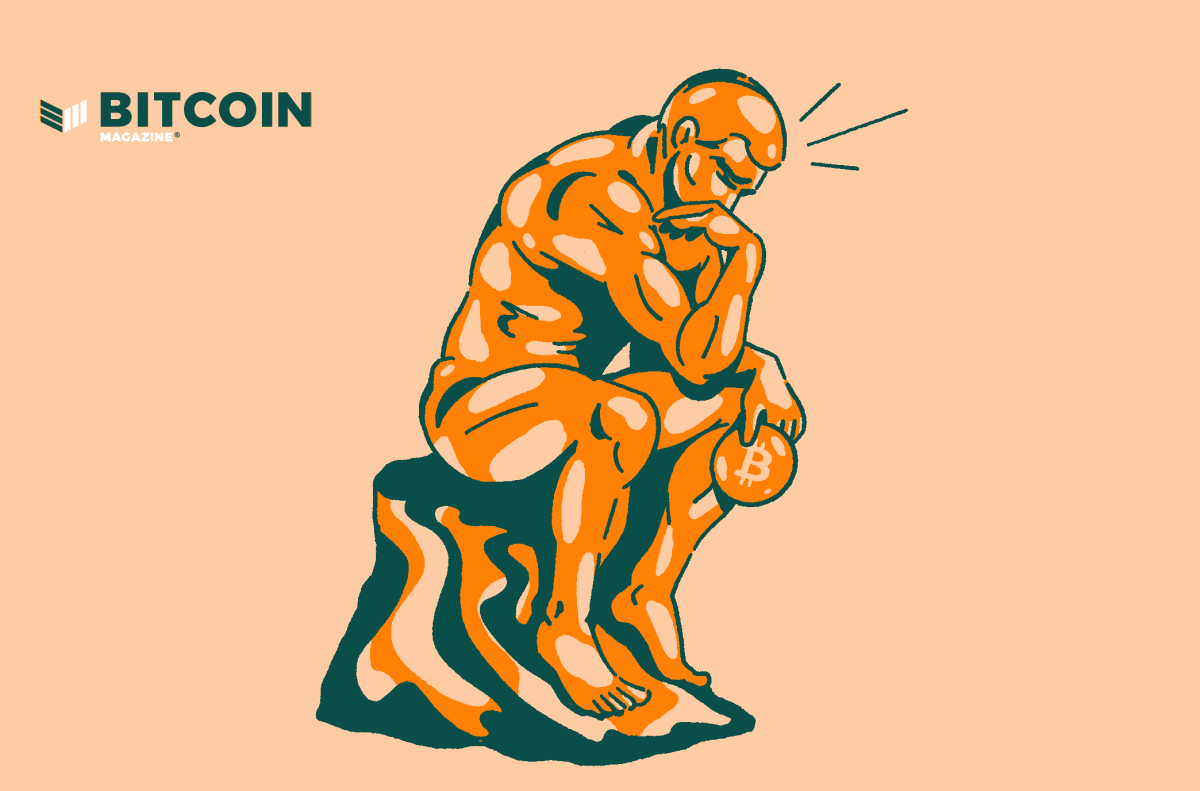Op Ed: Bitcoin and the Dawn of the Negative Interest Rate Era
On the morning of Monday, September 15, 2008, at 6:55 a.m., I arrived at my turret on the trading floor of a Manhattan-based hedge fund and flipped on my Bloomberg terminal. As the head of trading, I was in the habit of looking at sovereign debt markets before checking our positions from the previous trading day. But on this morning, reviewing world bond markets took on a particular urgency. Lehman Brothers was filing for bankruptcy and the entire world was in the throes of the worst financial crisis in 75 years.
What I saw was that, all over the world, short-term debt markets — “bills,” in industry parlance — showed negative yields. In virtually every industrial nation, firms and individuals were seeking the safety of the printing press, effectively handing $100 to governments for the assurance of receiving $98 in four weeks.
This was, of course, a brief moment in time within a highly liquid and mostly unhindered financial market. Rather quickly, the classic shape of the yield curve returned.
Fast-Forward One Decade
Currently, the Danske Bank of Denmark is in the process of introducing the first negative 10-year fixed-rate mortgage. In recent weeks, the German Finance Ministry has voiced disappointment at the lack of demand for 30-year zero-coupon bonds. And with early anticipation of a recession, the U.S. and Sweden are contemplating issuing half- and full-century bonds, even as the U.S. president is urging the Federal Reserve to lower rates by 100 basis points, back to all-time low levels.
The European Central Bank’s Governing Council believes that inflation is too low, growth is anemic and prospects are bleak. It appears that by the end of October 2019, the deposit rate will be minus six-tenths of 1 percent and the refinancing rate minus two-tenths of 1 percent.
Like it or not, we stand at the dawn of the negative interest rate world.
Convinced of the necessity to inflate, irrationally fearful of deflation and, in any case, eager to add a new tool to their policy armamentarium, central bankers are — both in peer-reviewed journals and less formally — embracing the idea with gradually increasing interest. Early experiments, such as those previously mentioned, are underway.
Blunting the Market Process
Market processes are social processes, and human beings are fundamentally economic actors. Econometric modeling and hopeful theorizing set aside, people are temporal beings for whom present satisfaction is preferred to future satisfaction. Interest rates are nothing less than the memorialization of this. However, an implication of a negative natural rate of interest would be that, given a choice between receiving $100 today or receiving $10 one year from now, economic actors would (ceteris paribus) choose receiving $10 in one year.
Thought of another way, the natural, positive interest rate is a forbearance discount; a spread or value adjustment of sorts, comparing the current assessment of a later desire with an earlier desire. Although this comparative rate may change — it may steepen or flatten, even invert at times — it is always and everywhere positive. It doesn’t disappear, and it never goes negative.
Positive, temporally rising interest rates are a function of the intersection of infinite desire, limited availability and mortality. Negative interest rates are a corruption of economic calculation.
An Invisible Subsidy
On a grander scale, under a negative interest rate regime, many firms and projects which would have failed under normal, positive rates of interest will continue to operate. The commercial failure and liquidation which, to no small extent, central banking policies seek to prevent, in fact (and however painfully), frees up capital for new firms and projects, all of which keeps innovation vibrant and rewards the most efficient stewards of capital.
By delaying or thwarting the forces of creative destruction, negative interest rates — not unlike their less radical cousin, artificially low interest rates — bring about a dearth of investment and lack of opportunity. Market signals are confounded, and economic growth inevitably suffers.
When negative interest rates are introduced, technocratic sleight-of-hand will undermine market-based processes — not least of which, entrepreneurial alertness.
Interest Rates Coordinate Savings and Investment
And interest rates do more than simply influence rates of saving and consumption. A major mistake in this policy making worldview is the treatment of the interest rate as primarily, or exclusively, a yoke or accelerator on “spending.” In fact, interest rates coordinate investment, production and consumption decisions over time, ranging from the heaviest consumption goods to the simplest consumer goods. Individuals and firms make choices based upon prices which are, in turn, influenced by financing. Those choices en masse send signals to producers throughout the economy regarding shifts in tastes and preferences.
There are, as with all central planning initiatives, possibilities for unintended consequences as well. For one, expecting market interest rates to move in lockstep with rates targeted by central banks is a dicey bet. In a negative interest rate environment, market interest rates may in fact rise.
Most banks take in short-term deposits and lend over the longer term. The bank’s revenue and net income (profit) is, therefore, dependent upon the spread between the rate it charges to borrowers and the rate it pays to depositors. With negative interest rates, some banks will need to find a way to recoup lost revenue.
But if they charge a negative interest rate to depositors, they will almost assuredly experience an outflow of deposited savings. Banking executives would then face an unenviable decision: Call in loans to satisfy exiting depositors or liquidate facilities and decrease staffing. But both of these choices would be — like so many other banking choices — penny-wise and pound-foolish, decreasing trust in the bank and perhaps accelerating the withdrawal of savings.
The bank’s preferred solution then might be to keep income up by widening the spread between deposit rates and lending rates by increasing the interest rate charged to borrowers. Thus, dropping into negative interest rates on deposits can lead to a rise in interest rates for borrowers.
Negative interest rates are, in any case, likely to bring about a rise in banking fees: for ATM use, for transfers, for overdrawn accounts and so on. And rising banking fees disproportionately affect the poor, which invites greater regulation and control by political entities.
The Road to Serfdom … via Credit Markets
A final implication of negative interest rates is that the spending of the state, essentially all of which is not productive, will become the primary contributor to economic growth. A gradual shortening of focus, which is already an Achilles’ heel of democracies, will magnify. With policies oriented toward front-loaded economic growth will come increasingly disproportionate influence of interest groups, more possibilities for calculation error and lackluster growth.
And if negative interest rates mean that essentially any firm or individual can receive a loan, central bankers will eventually have to pursue a policy of credit rationing. Political entities, rather than markets, will decide what firms and individuals receive loans and upon what terms and conditions. Will this favor defense contractors over, say, casino and gaming firms? Will only industries that are unionized receive credit, or will collective bargaining be required in order to do so? Should weaker sectors be supported or stronger sectors bolstered? In the EU, such issues as what countries should be allocated more credit will undoubtedly rear their troubling heads.
So, by squeezing out and possibly starving credit markets, central banks will, over time, heavily influence choices regarding production, consumption and terms of exchange. Even the remote possibility of that occurring should be alarming.
Where Does Bitcoin Land?
The role of bitcoin, and cryptocurrencies more broadly, in a negative interest rate world (as unlikely as that truly is), is twofold.
First, one can imagine a new era of cryptocurrency banking — a throwback to an earlier, brick-and-mortar age — in which time preference (expressed via savings) influences interest rates, which in turn funds current production for future consumption.
And once millions of depositors realize that their savings will be winnowed away absent constant consumption, they will rush for the exits. In this case, one of two likely outcomes is possible: There will be bank runs or, more likely, the imposition of controls on withdrawals. Staving off the temptation of conspiracy theorizing, negative interest rates, modern monetary theory and a number of other newfangled monetary policy proposals face the same Achilles’ heel: a massive wave of withdrawals from banks and other financial institutions that will put their viability at risk.
The recent rash of proposals toward creating a cashless economy — variously explained as bringing about new efficiencies or to thwart criminal activity — should be viewed with far more suspicion than they have been thus far. The new crop of utopian plans require nothing less than a personal finance surveillance state;
Bitcoin is the best defense for individuals seeking to rapidly exit the financial system if access to cash were rendered difficult, more costly, or outright illegal.
Endgame
What we are seeing at present is only the latest stage of a widening gulf between sober policymaking and a body of economic theory divorced from the realities of human action. But unlike the many tweaks and changes that have come about over the last century or so, the breaching of the zero barrier represents a major point of inflection in monetary policy, a thumbed nose at the conventions which built modern civilization.
It brings to mind the joke about the primary difference between economists and biologists: Biologists at least have the decency to test their experiments on fruit flies before human beings.
This is an op ed by Peter C. Earle, a research fellow at the American Institute for Economic Research. Opinions expressed are his own and do not necessarily reflect those of BTC Inc or Bitcoin Magazine.
The post Op Ed: Bitcoin and the Dawn of the Negative Interest Rate Era appeared first on Bitcoin Magazine.









